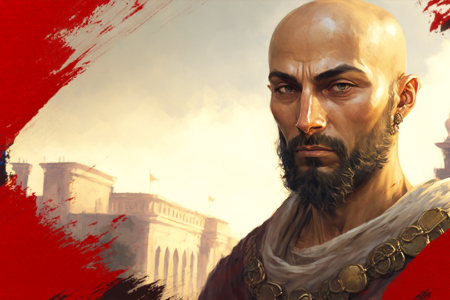Let’s Nosh Some Hamantaschen!
Oh, once there was a wicked, wicked man, / And Haman was his name, sir,
He would have murdered all the Jews, / Though they were not to blame, sir.
Oh today, we’ll merry, merry be. / Oh today, we’ll merry, merry be.
Oh today, we’ll merry, merry be / And nosh some hamantaschen.
A humorous quip describes most of Jewish history: “They tried to kill us. They failed. Let’s eat.”
Jewish people have a way of making light of tragedy because our history overflows with it. But the quip isn’t far from the truth! In Egypt, Pharaoh enslaved us, God raised up Moses to deliver us, and we ate the Passover lamb. During the intertestamental period, Antiochus Epiphanes tried to convert or kill us; and today we celebrate Hanukkah and eat doughnuts and potato latkes (pancakes).
Then there is Purim, which is what the little song about Haman is all about. Haman, Persian King Ahasuerus’s Jew-hating prime minister, convinced the monarch to sign a decree “to destroy, to kill, and to annihilate all the Jews, both young and old, little children and women, in one day” (Est. 3:13).
Queen Esther stopped him by putting her life on the line. The Jewish people were delivered; and, to this day, we eat a pastry called hamantaschen, a three-cornered, fruit-filled cookie said to resemble Haman’s hat.
Purim epitomizes Jewish life: unrelenting persecution, followed by miraculous preservation wrapped in the truth of God’s choice as a special people. Like Tevye the milkman in the Broadway musical Fiddler on the Roof, I used to wonder when I was young, Can’t you choose someone else?
Yet, when I think of Purim, I remember the camaraderie and community of my family and friends, along with the fun and festivities we enjoyed together. Purim always starts with the greeting, “Happy Purim!” (in Hebrew, Chag Purim Sameach!) and continues with a joyful celebration that, for me, was always with my family in our shul (synagogue). I enjoyed listening to the whole Megillah (scroll of Esther) read in Hebrew.
You might ask how I endured, let alone enjoyed, the seemingly endless reading of a Bible book in a language not my own. The answer is simple. Purim was the one day a year I could wear casual clothes to shul and was actually encouraged to be rowdy. We all were given groggers (wooden or metal noise makers) to use whenever Haman’s name was read. So when I heard the villain’s name, I rose up, stomped my feet, booed, and hissed. Haman wanted to blot out the Jews; but, instead, during Purim, we blot him out.
Part of the celebration also included a “beauty contest,” based on Esther 2:2–3:
Let beautiful young virgins be sought for the king; and let the king appoint officers in all the provinces of his kingdom, that they may gather all the beautiful young virgins to Shushan the citadel, into the women’s quarters, under the custody of Hegai the king’s eunuch, custodian of the women. And let beauty preparations be given them.
At our shul, all the children took part; and everyone won a prize. Most girls dressed as Queen Esther, whose brave stand for her people helped save us from Haman’s evil scheme. Some boys used their mothers’ eyebrow pencils to draw dark sideburns and etch black goatees onto their chins to become the wicked Haman.
I always dressed as Mordecai, with a robe and white beard. (I was certain Mordecai sported one.) I made the beard out of cotton balls that I glued together and then glued onto my face. Mordecai was my favorite because he refused to bow down to Haman.
And, of course, I ate lots of hamantaschen. Today, these pastries are available all year. Whether filled with poppy seed (my favorite) or strawberry, cherry, prune, or apricot jam or preserves, hamantaschen are a tasty reminder of the fate of the antisemite Haman. God never wants us to forget the evil from which He delivered us.
Happy and festive times indeed. But it was not until I became a believer in Jesus as my Messiah and Savior that I learned the most important truth about Purim: It reveals God’s providential care over His Chosen People. Haman told King Ahasuerus,
There is a certain people scattered and dispersed among the people in all the provinces of your kingdom; their laws are different from all other people’s, and they do not keep the king’s laws. Therefore it is not fitting for the king to let them remain. . . . Let a decree be written that they be destroyed, and I will pay ten thousand talents of silver into the hands of those who do the work (3:8–9).
We deserve death—not at the hands of men but at the hand of God. In fact, all people deserve death because we all are sinners (Eccl. 7:20). But throughout the Jewish Scriptures, God demonstrates time and again by His mighty hand and outstretched arm that His love for us endures forever (cf. Ps. 136:12; Jer. 31:3).
Haman could not eradicate the Jewish people. No one can—not Haman, not Hitler, not even Satan—because God has promised that Israel will endure forever; and He is a promise-keeping God:
Thus says the LORD, who gives the sun for a light by day, the ordinances of the moon and the stars for a light by night, who disturbs the sea, and its waves roar (the LORD of hosts is His name): “If those ordinances depart from before Me, says the LORD, then the seed of Israel shall also cease from being a nation before Me forever.” Thus says the LORD: “If heaven above can be measured, and the foundations of the earth searched out beneath, I will also cast off all the seed of Israel for all that they have done, says the LORD” (Jer. 31:35–37).
So, let’s celebrate God’s faithfulness and nosh some hamantaschen!
Photo: Adobe Stock








